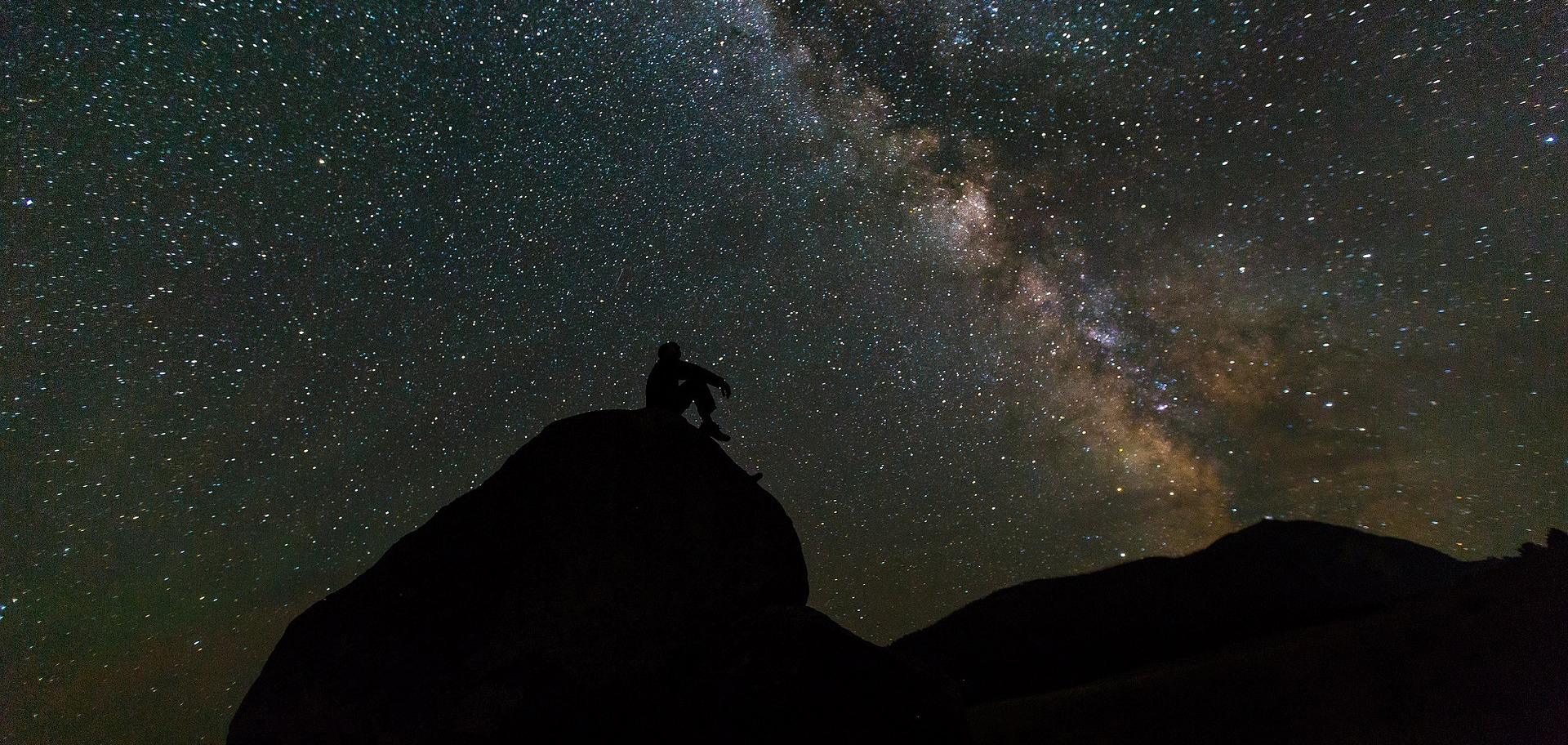
A child born today has a less than one-in-10 chance of witnessing a dark sky.
I want you to conduct a test tonight: When it gets dark, go outside and stand in your backyard. Look up. Can you see the Milky Way?
If not, you’re not alone. More than two-thirds of Americans cannot see our own galaxy from our backyards, according to researchers in the department of astronomy at the University of Padova, Italy. The reason is due to “light pollution,” misdirected or badly designed artificial light, which shines outward and upward into the sky rather than downward, where we think we are in need of it.
If light pollution continues to increase at its current rate, no dark skies will remain in the continental United States by the year 2025, says Chadwick Moore, the program manager of the National Park Services’ Night Sky Team, based at Colorado State University.

Migrating birds, such as this whooping crane, are especially susceptible to artificial night light. ©John T. Andrews
Could stargazing, then, be the next “animal” to go extinct?
Let there be light . . .
Circadian rhythms are powerful forces in our lives. We evolved as diurnal creatures, adapted to living and working in the sun’s light and sleeping in the dark. Exposure to artificial light at night may affect our moods, lead to anxiety or even trigger factors that make us fat. And according to research done by Richard G. Stevens, Ph.D., a professor and cancer epidemiologist at the University of Connecticut Health Center, night light could increase our risk for breast cancer.
For nonhuman animals, birds and insects, keeping the night dark may be even more important. Artificial night light disrupts nocturnal animals’ ability to hunt, hide from predators, navigate and reproduce.

Today, the best chance to see a natural night is in a national park.
Migrating at night, birds—especially immature ones on their first journeys—have been known to collide with brightly lit, tall buildings. Scientists estimate that about 100 million birds are killed in this country annually by crashing into windows or dying from exhaustion after becoming confused while trying to navigate by artificial night light instead of the stars. Thousands of seabirds get disoriented by light from gas flares on marine oil platforms, circling around and around until they drop.
Today, nesting sea turtles, hoping to find dark beaches, have few options. Their hatchlings, which need to get to the sea as soon as possible to avoid predators, naturally gravitate toward the reflective, bright sea horizon. More and more, though, they are being confused by artificial lighting on land behind the beach. Hatchling losses in Florida alone number in the hundreds of thousands every year.
. . . Along with the dark
Light pollution and the problems it causes used to be mainly the concern of professional astronomers. In fact, some of the earliest attempts to mitigate the effects of light pollution were made in Flagstaff, Arizona, more than a half century ago. Regulations were put in place to protect the view from the Lowell Observatory, located high above the city. Since then, Flagstaff has improved upon its standards, and in October 2001 it was declared the world’s first International Dark-Sky City. Today, fortunately, the movement has spread and more and more cities and countries around the globe have committed themselves to reducing glare.

The National Park Service believes that starry skies are as endangered as Katmai’s grizzly bears or Yellowstone’s wolves. Should they be saved, too, before they reach the brink of extinction?
Here at home, stargazing has become one of the most popular attractions at our national parks. More than 65 park rangers have been trained to use telescopes, teach basic astronomy and lead constellation tours. You can now attend star parties in the Grand Canyon, go on moonlight hikes in Bryce Canyon or get close to the heavens on Glacier Point in Yosemite.
It is estimated that a child born today has a less than one-in-10 chance of ever witnessing a truly dark sky. His or her best chance to see a natural night is in a national park. With their extinction imminent, starry skies are now recognized by the National Park Service as endangered and entitled to the same protection as the grizzly bears of Katmai or the wolves of Yellowstone.
Can our starry skies be saved, too, before they reach the brink of extinction?
Here’s to finding your true places and natural habitats,
Candy

























Increased artificial light… just one of those things we have to adapt to.
Disruptions to circadian rhythm can have a whole host of negative impacts on humans too, including poor memory and decreased longevity, in addition to what you listed above.
Has the energy crisis (cost of gas and therefore electricity and therefore lighting) helped any?
Sounds like a great adventure book, Larry! Thanks for the comment.
Candice, I fear you may be right. I remember nights at sea when we could see stars all the way down to the horizon. We even altered course several times for stars, thinking they were ships! Some of these were funny experiences and are in my book. All the best, Larry